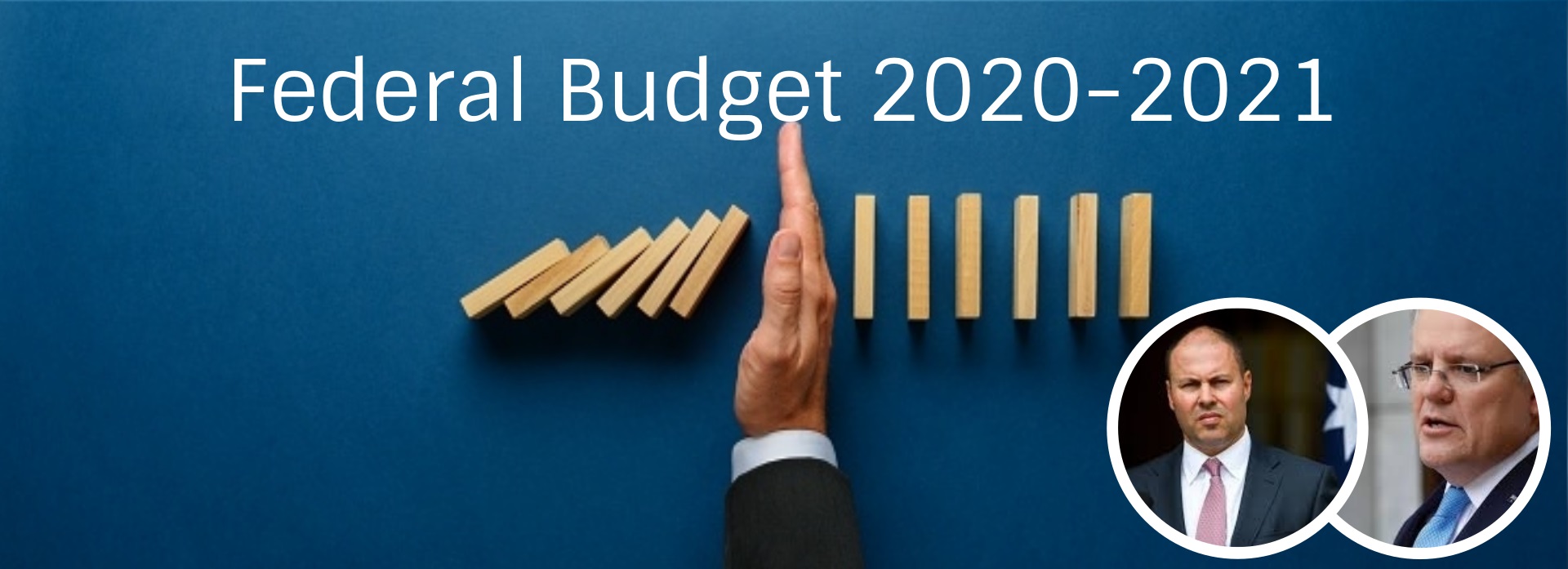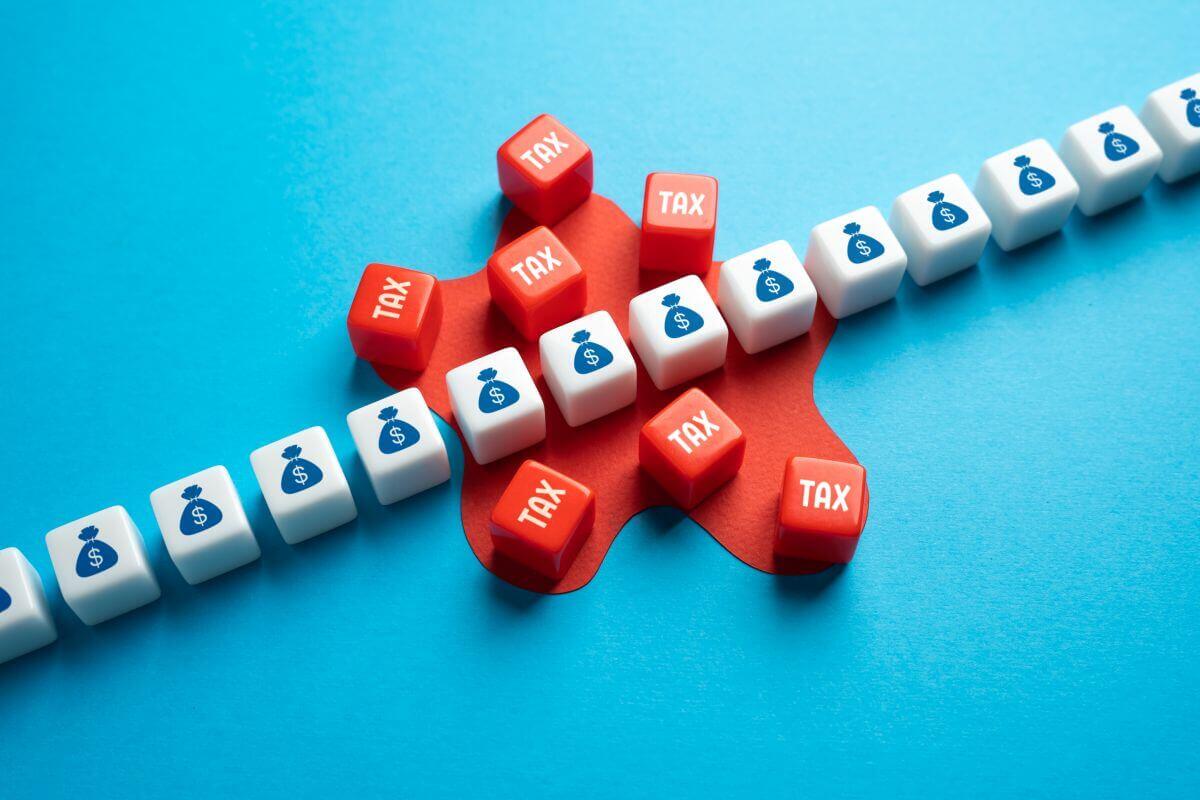On October 6, Treasurer Josh Frydenberg handed down a historic Federal Budget 2020-2021 promising to recover what has been lost – jobs, incomes, revenue, customers and building the Australian economy for the future.
This Budget is at the scale that we haven’t seen before!
IN BRIEF
- The Federal Government delivered a once in a generation budget bringing the total response and recovery assistance value to an estimated $507 billion
- Stage 2 tax cuts will be implemented 2 years ahead of schedule.
- The government has shown its intention to kickstart the economy by supporting business growth with a range of incentives
- The government is showing its commitment to building business for the long term by investing in young employees.
- Around $2 billion will be poured into the Research and Development Tax Incentive
This is what's in the Federal Governments 2020/2021 Budget for you.

Tax cuts
The government’s Stage 2 tax cuts will be implemented 2 years ahead of schedule, and retrospectively from July 2020.
The tax thresholds have risen, meaning more money for more people. Those earning $50,000 a year can expect an extra $1,080, those earning $90,000 will get $1,215 and those on more than $120,000 will get $2,565.
The Low and Middle Income Tax Offset will remain for another year, with up to $2,160 for double income families. Increments of these could begin appearing in workers’ pay packets within just a few weeks.
 Debt and deficit
Debt and deficit
The underlying cash balance is now expected to reach a deficit of $213.7 billion (11 per cent of GDP) in 2020-21 before improving to $66.9 billion (3 per cent of GDP) in 2023-24.
Net debt is expected to be 36.1 per cent of GDP at 30 June 2021 and peak at 43.8 per cent of GDP at 30 June 2024. Net debt is then projected to fall over the medium term to 39.6 per cent of GDP at 30 June 2031.

R&D Tax Incentive changes
An additional $2 billion will be invested through the R&D Tax Incentive, including increasing the refundable R&D tax offset and removing the cap on annual cash refunds for small claimants. Larger claimants will be subjected to a streamlined intensity test with the cap lifted from $100 million to $150 million a year.
We see this as a massive boost for our innovative clients.
 Employees and apprentices
Employees and apprentices
The government is showing its commitment to building business for the long term by investing in young employees.
JobMaker hiring credit
Effective immediately, businesses that take on a jobseeker aged under 35 years will receive a payment of $200 a week for an eligible young person aged 16-29 years and $100 a week for a young person aged 30 to 35 for up to 12 months.
Employers must demonstrate they have increased their overall employment. It is expected this will trigger young people to re-join the workforce and get them back employed. It is estimated the $4 billion scheme will support around 450,000 young Australians into jobs.
Apprentice & Trainee subsidy
The government is introducing a skills package for young workers, including a $1.2 billion package for employers taking on new apprentices and trainees. This support extends to existing apprentices and trainees where the 50% wage subsidy will support 100,000 new positions.

Business reboot
Even though Jobkeeper is due to wind down by April next year, the government has shown its intention to kickstart the economy by supporting business growth with a range of incentives.
Investment boost for business
Effective immediately (until 30 June 2022), businesses with turnover up to $5 billion will be able to deduct the full cost of eligible depreciable assets of any value in the year they are installed. This is a major incentive for businesses to bring forward investments.
In the budget papers it is quite clear there are two distinctions to make:
1. Full expensing will apply to a new depreciable asset, however if you are a small or medium sized business (less than $50 million turnover) it also applies to second hand assets.
2. If you are over the $50 million turnover threshold but less than $500 million you can still deduct the full cost of second hand assets costing less than $150,000 purchased by 31 December 2020 with an additional 6 months to install the asset (to 30 June 2021).
Tax Relief
Whilst not a budget measure it would be prudent to remind businesses of the governments previously legislated changes to the company tax rates, currently sitting at 27.5% and legislated to reduce to 25% by 2021-22 for businesses with an aggregated turnover of $50 million or less who are base rate entities.
Tax concessions
The government intends to expand access to a range of small business tax concessions by increasing the small business entity turnover threshold for these concessions from $10 million to $50 million. This includes concessions with respect to deducting start-up costs, prepayment deductions, simplified trading stock rules and 2 year amendment periods. These concession changes are split between starting on 1 July 2020 or 1 July 2021.
Businesses will also receive FBT tax concessions if they pay to retrain or reskill workers as well as FBT exemptions for car parking and eligible work-related electronic devices.
Temporary Loss carry-back
The Government will allow companies with turnover up to $5 billion to offset losses against previous profits on which tax has been paid to generate a refund. Loss carry-back will be available to around 1 million companies that employ up to 8.8 million workers.
The idea being you can carry back losses from the 2019-20, 2020-21 or 2021-22 years to offset previously taxed profits in 2018-19 or later income years. The tax refund will be available on election by eligible businesses when they lodge their 2020-21 and 2021-22 tax returns.
This measure is expected to deliver $4.9 billion in tax relief to businesses over the forward estimates.
Additional support for the construction sector
On top of the existing Homebuilder scheme ($25,000 grants for eligible renovations or new builds), the Budget announced several new initiatives to boost construction.
This includes additional incentives for first homebuyers to purchase new dwellings, boosting arrangements to encourage institutional investment into affordable housing and a capital gains tax exemption for granny flats (where there is a formal arrangement for older Australians or persons with a disability).
There’s good news for you if you’re one of the following six sectors
- resources technology and critical minerals processing
- food and beverage manufacturing
- medical products
- clean energy and recycling
- defence industry
- space industry.
The government will co-invest with you on large projects, grants for transformational investment in technologies and processes, and upgrading supply chains.

and there's more....
$100 million will be invested in new road and rail projects over the next 10 years, freeing urban congestion, and strengthening freight and supply chains that have been severely disrupted during the COVID epidemic.

CONCLUSION
Clearly this years Federal Budget announcement was very much focused on getting Australians back to work, backing families, backing small businesses, backing job creation and employment, and building Australia's economy for the future.
This article is intended to provide general information only, and is not to be regarded as legal or financial advice. The content is based on current facts, circumstances, and assumptions, and its accuracy may be affected by changes in laws, regulations, or market conditions. Accordingly, neither Azure Group Pty Ltd nor any member or employee of Azure Group or associated entities, undertakes responsibility arising in any way whatsoever to any persons in respect of this alert or any error or omissions herein, arising through negligence or otherwise howsoever caused. Readers are advised to consult with qualified professionals for advice specific to their situation before taking any action.









Comment